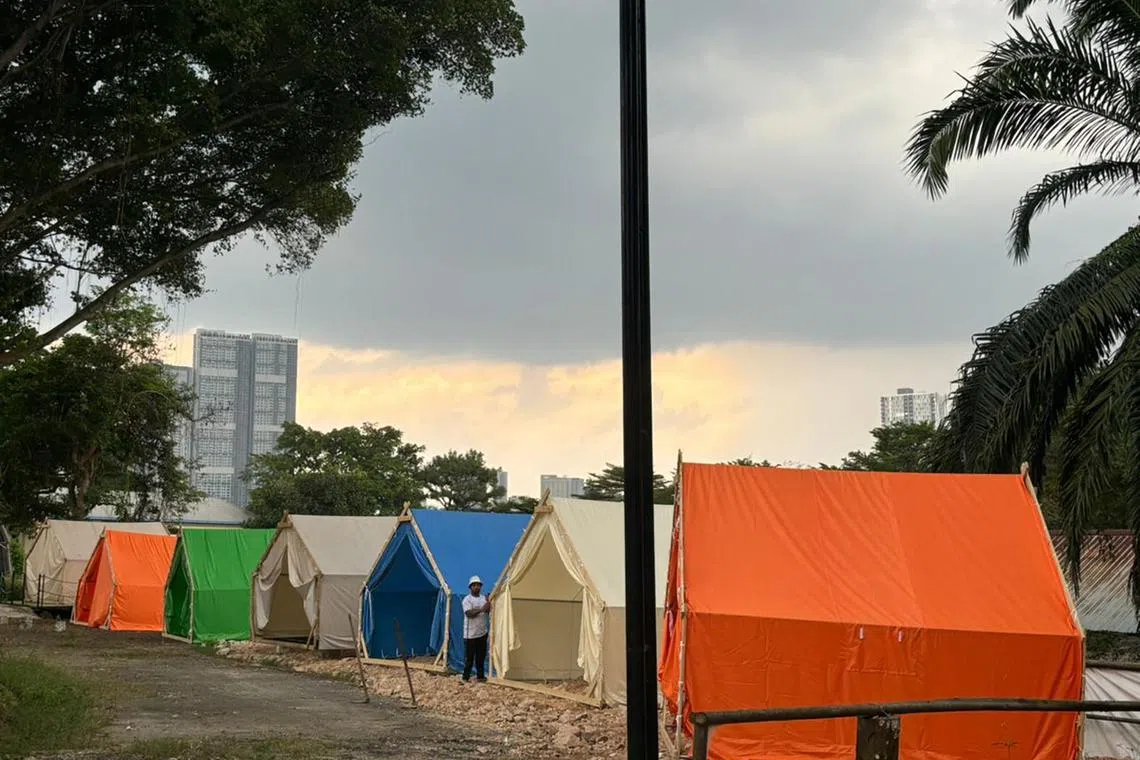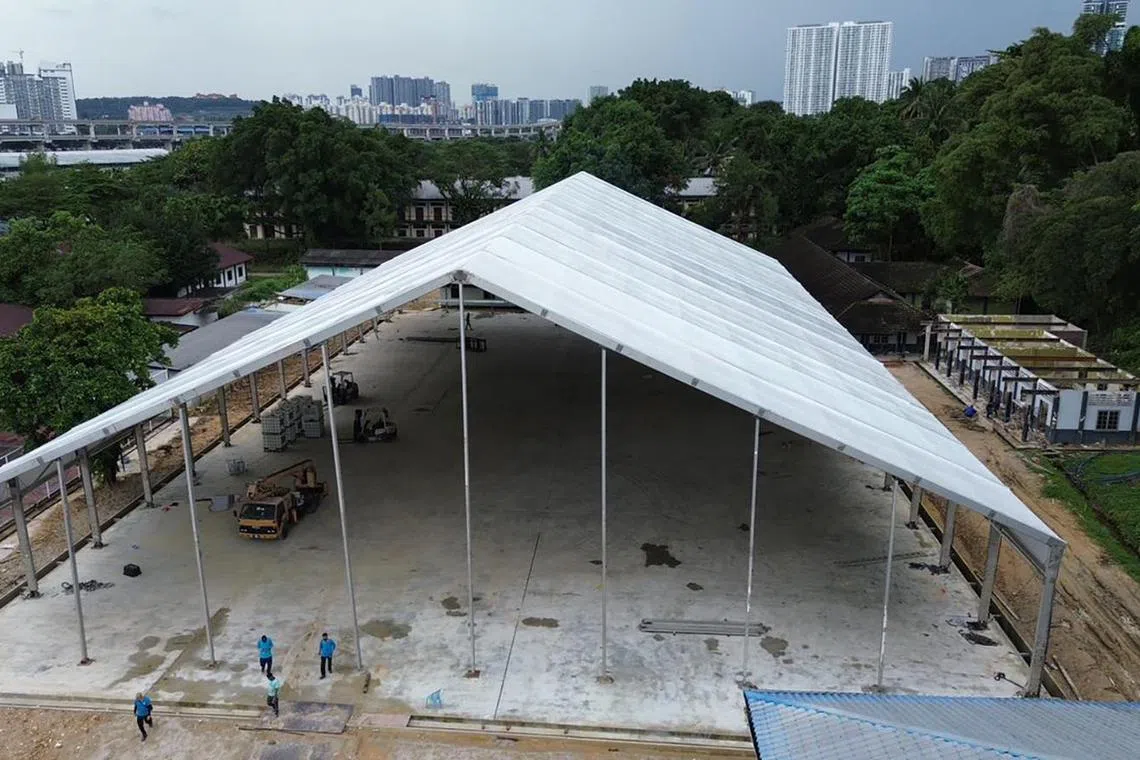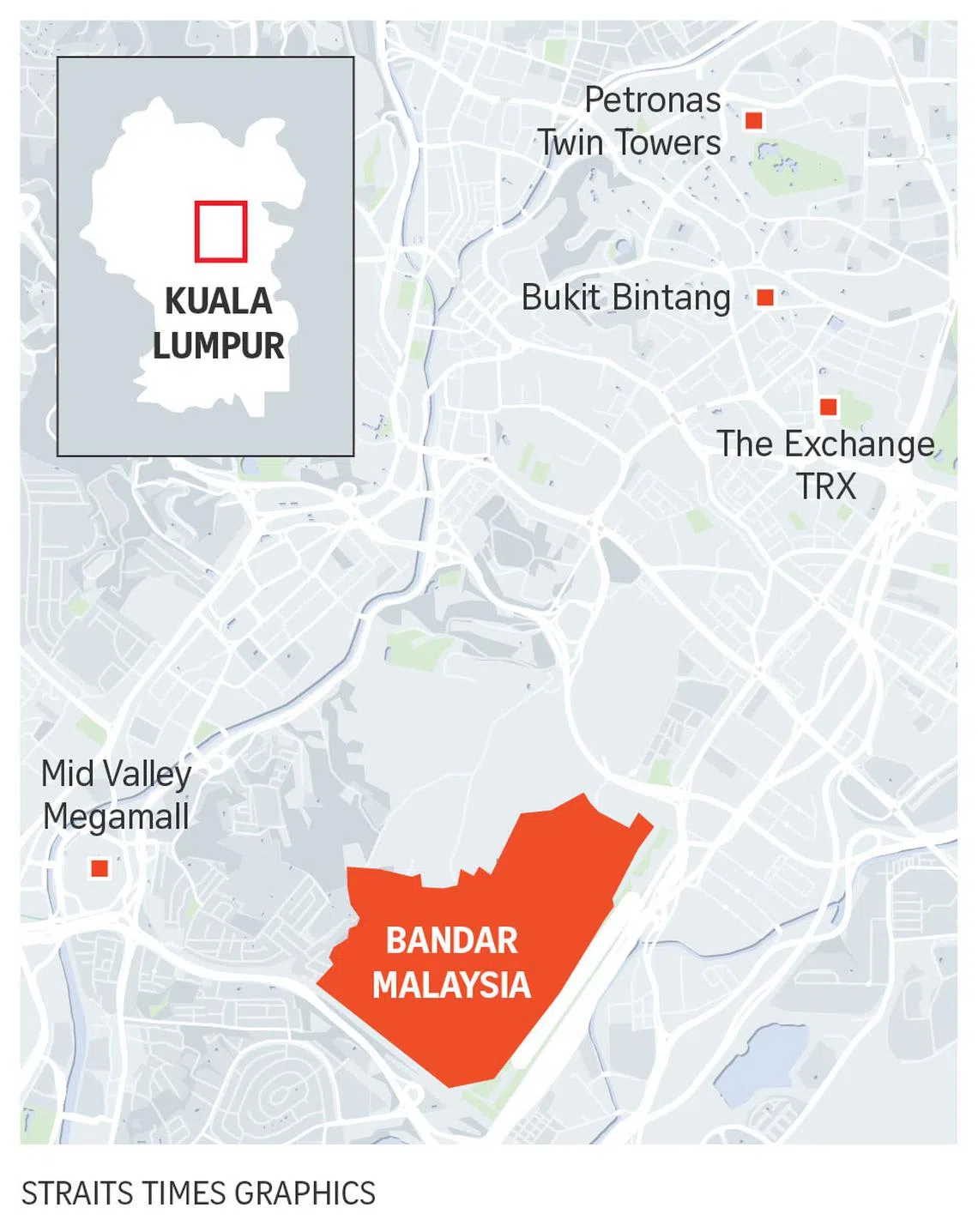Bandar Malaysia’s revival in good hands with new owner, say analysts, but critics question deal
Sign up now: Get ST's newsletters delivered to your inbox

The site was intended to be the terminus for the now-scrapped Kuala Lumpur-Singapore High Speed Rail.
PHOTO: BANDAR MALAYSIA
Follow topic:
KUALA LUMPUR - Bandar Malaysia’s revival is in good hands, say analysts, after KLCC Holdings announced on Dec 23 that it had acquired the 486-acre (196ha) stalled megaproject
The site, formerly an air force base on Jalan Sungai Besi in Kuala Lumpur, was intended to be the terminus for the now-scrapped Kuala Lumpur-Singapore High Speed Rail (HSR), and house a subterranean shopping mall, canals, indoor theme parks, a financial centre and residential units.
Analysts say that KLCC Holdings has a good track record for large-scale property development such as Kuala Lumpur City Centre, where the capital’s iconic Twin Towers are located, and administrative capital Putrajaya. It will also have sound financial backing from its main shareholder Petronas, Malaysia’s national oil company.
Mr Siva Shanker, chief executive of the estate agency arm of Rahim & Co International, said KLCC Holdings has the requisite experience to manage huge developments. “They did it successfully, they have a track record, and they can do it again,” he told The Straits Times.
Financing should be less of an issue now that a more stable investor is involved, said Dr Geoffrey Williams, founder and director of Williams Business Consultancy. “This significantly increases the chances of success,” he said.
However, detractors say there should have been more transparency surrounding the deal, which was inked on Oct 4, and questioned if the move was a bailout for Bandar Malaysia’s owner, the Ministry of Finance.
KLCC Holdings did not disclose the sale price in its announcement on Oct 4. But media outlet The Edge reported that the deal is estimated to be worth as much as RM12 billion (S$3.6 billion). The original massive township had an estimated gross development value of RM150 billion.
Mr Halmie Azrie Abdul Halim, an independent political analyst, told ST that given the scale of the transaction, the government must be held accountable and cannot allow direct negotiations to take place behind closed doors. He also noted that the Bandar Malaysia project, first unveiled in 2011 under the Najib Razak government, had encountered controversy before.
“Such lack of transparency raises alarm bells for a cover-up or potential bailout. The project was previously shrouded in controversy relating to land values being inflated to cover up losses at 1MDB,” he said, referring to 1Malaysia Development Berhad, the state fund from which billions were embezzled.
In 2015, a consortium comprising Iskandar Waterfront Holdings and its partner China Railway Engineering Corp agreed to buy a 60 per cent stake in Bandar Malaysia from 1MDB for RM7.41 billion.
The deal was expected to ease the debt burden of 1MDB, but it lapsed in 2017 after the consortium failed to meet its payment obligations.

Facilities one of the Bandar Malaysia tenants, PSA Asia, was in the midst of building, including tents for glamping, a racquet park and a shooting range club.
ST PHOTO: ZUNAIRA SAIEED
The parties tried to revive Bandar Malaysia but plans fell through again in 2021, as they could not agree on the conditions required to proceed. The RM1.54 billion already paid by the consortium was returned, paving the way for new investors.
Backed by Petronas, KLCC Holdings should have no issues raising funds through both debt and equity, Mr Ravindran Navaratnam, co-founder of debt restructuring advisory firm Sage 3, told ST.
“A pure private-sector initiative for such a large land bank and development is highly risky, as seen with initial failures and bankruptcy of projects such as London’s financial district Canary Wharf,” he added.

For now, tenants have been told by Bandar Malaysia management to submit their claims by January and vacate the premises within six months.
ST PHOTO: ZUNAIRA SAIEED
KLCC Holdings has yet to disclose its development plans, saying on Dec 23 only that Bandar Malaysia “is envisioned as an international business hub and a liveable and inclusive city for the community”. It did not respond to ST’s queries.
Prime Minister Anwar Ibrahim had announced under the 2025 budget
For now, tenants who had recently leased parts of the land to construct their entertainment and recreation businesses have been told by Bandar Malaysia management to submit their claims by January and vacate the premises within six months.
“We have spent millions of ringgit to develop this entertainment and recreational hub… which is 70 per cent completed. It would be a waste if all this is gone,” said Mr Dzulkarnain Ahmad, director of PSA Asia, one of the tenants.

It was in the midst of building a racquet park, shooting range club and facilities for glamping.
Mr Siva believes KLCC Holdings will take about 20 to 25 years to complete the development at Bandar Malaysia. “They need to breathe life into this entire 486-acre development slowly. It will be structured slowly,” he said.
Editor’s note: This article has been edited for accuracy.
Zunaira Saieed is Malaysia correspondent at The Straits Times, covering the business beat with occasional forays into political coverage.


